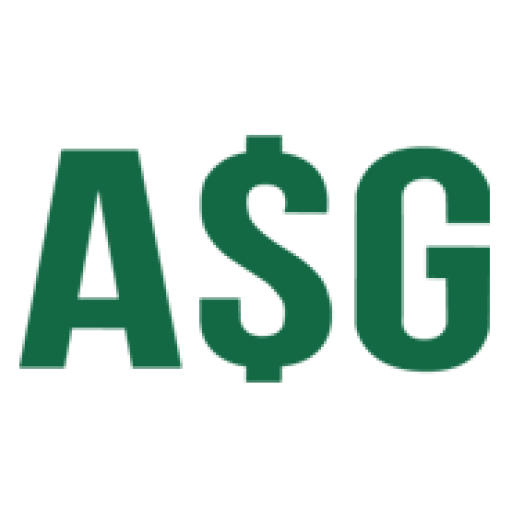
Source: pexels
Are you curious about the backbone of e-commerce? Look no further, because product sourcing is the key player in providing top-quality goods to meet the ever-growing consumer demand.
In this comprehensive guide, we’ll embark on an exhilarating journey, exploring the intricate world of product sourcing and its profound impact on the thriving e-commerce landscape. From identifying lucrative product opportunities to navigating the intricate web of supplier relationships, quality control, and cost optimization, we’ll leave no stone unturned.
So, whether you’re a seasoned e-commerce pro or a budding entrepreneur, get ready to unlock the secrets of effective product sourcing when you in varies of online shopping platforms.
What is Product Sourcing in E-commerce?

Source: unsplash
Product sourcing in e-commerce is finding and acquiring the products you’ll sell online. It involves tasks like identifying manufacturers, wholesalers, or dropshippers, and negotiating deals for the best price and quality.
The primary objective of product sourcing is to secure high-quality products at competitive prices while establishing consistent and reliable supplier relationships. By doing so, e-commerce businesses can maintain optimal inventory levels and ensure customer satisfaction through timely order fulfillment.
The Basics of E-commerce Product Sourcing
Identifying Your Needs
Before embarking on the product sourcing journey, it is crucial to conduct a comprehensive assessment of your business’s specific requirements. This involves determining the types of products needed, their quantity, quality standards, and any unique specifications that align with your brand’s offerings.
Researching the Market
Thorough market research is essential for identifying potential suppliers and understanding current trends in consumer preferences. Additionally, keeping an eye on emerging trends such as sustainable product sourcing can provide valuable insights into evolving consumer demands.
The growing emphasis on sustainability in product sourcing is evident from statistics indicating a 71% rise in online searches for sustainable goods globally over the past five years.
Moreover, products making ESG-related claims have exhibited notable growth rates compared to those without such claims, reflecting consumers’ willingness to support environmentally conscious practices.
Wholesale stands out as one of the most prevalent methods within e-commerce product sourcing due to its flexibility in adjusting purchases based on consumer demand. This method allows businesses to adapt their procurement strategies according to fluctuating market needs.
Key Strategies for Effective Product Sourcing

Source: pexels
In the realm of e-commerce, finding quality products at competitive prices is a critical aspect of effective product sourcing.
Finding Quality Products at Competitive Prices
Research and Comparison
Finding the perfect supplier isn’t just about price. It’s about building a strategic partnership. Businesses can leverage market research and competitor analysis to identify suppliers that offer the best value proposition – a win-win of quality and affordability.
Data-driven tools help analyze key metrics like delivery times, product consistency, and responsiveness. This allows businesses to select dependable suppliers while optimizing costs through predictive analytics – anticipating and mitigating potential issues.
Leveraging Wholesale and Direct Manufacturers
Product sourcing in e-commerce goes beyond finding products. It’s about building partnerships with manufacturers. This direct approach unlocks greater control over customization, quality, and timelines. You gain a deeper understanding of your product’s origin and enjoy seamless communication to tailor offerings that perfectly match your brand.
Wholesale purchasing allows businesses to access bulk quantities at discounted rates, thereby enhancing their ability to offer competitive pricing to consumers. It also enables businesses to bypass intermediary markups, resulting in cost savings that can be passed on to customers.
Building a Diverse Supplier Network
The Importance of Having Multiple Suppliers
Don’t put all your eggs in one basket! Spreading your sourcing across multiple suppliers in different regions or industries builds resilience against unforeseen disruptions like natural disasters or political turmoil. This ensures a steady flow of products even in challenging times.
An added benefit? A diverse supplier network sparks healthy competition, driving better pricing, service, and innovation throughout your entire supply chain.
How to Vet and Choose Suppliers
Price isn’t everything. Building a strong supplier base requires looking beyond the bottom line. Look for partners that share your values. Evaluate their production capabilities, ethical practices, environmental efforts, and adherence to regulations.
Consider site visits (if possible) or third-party audits to ensure they meet operational standards. Clear communication is key: establish channels to discuss product specs, lead times, payment terms, and compliance needs upfront. This ensures a smooth and responsible relationship with your suppliers.
Navigating Supplier Relationships
To ensure a seamless flow of high-quality products to meet consumer demand, let’s explore the key strategies for navigating supplier relationships and optimizing order and inventory management.
Establishing Strong Communication
Setting Clear Expectations
Talk it out! Strong supplier relationships hinge on clear communication.
Clear communication is the cornerstone of any successful relationship. Before onboarding a supplier, establish open communication channels to discuss your expectations for product specifications, lead times, payment terms, and compliance requirements.
This transparency minimizes confusion and fosters a collaborative environment. Think of it as building a bridge to a successful partnership.
Maintaining Regular Contact
Regular interaction with suppliers is instrumental in nurturing strong relationships built on trust and transparency. Scheduling periodic check-ins or progress updates enables both parties to address any emerging issues proactively while also providing an opportunity to celebrate successes and milestones. This consistent engagement fosters a sense of partnership rather than transactional dealings, laying the groundwork for long-term collaboration.
The significance of robust communication in supplier relationships is underscored by Scandi Standard’s experience, where LeanLinking facilitated significant time savings in data collection from suppliers and streamlined data sharing between Quality and Procurement across factories. This optimization not only enhanced operational efficiency but also strengthened interdepartmental collaboration, reflecting the far-reaching impact of effective communication within supplier management processes.
Managing Orders and Inventory
Effective Order Management Strategies
Streamlining order management processes is pivotal in ensuring timely fulfillment while optimizing inventory levels. Implementing efficient order tracking systems and automated workflows minimizes lead times, reduces errors, and enhances overall operational agility. Moreover, leveraging technology solutions tailored to e-commerce operations can provide real-time visibility into order status, enabling proactive decision-making to address potential bottlenecks or delays.
Inventory Management Best Practices
Adopting best practices in inventory management is crucial for balancing supply and demand dynamics while minimizing carrying costs. Utilizing data-driven insights to forecast demand patterns empowers businesses to optimize stock levels based on anticipated customer requirements. Furthermore, implementing just-in-time inventory principles can mitigate excess inventory accumulation while facilitating rapid response to evolving market trends.
ITG’s successful experience with a supplier relationship management solution resulted in a significant improvement in supplier attitude, responsiveness, and performance. This transformation not only elevated operational efficiency but also exemplified the transformative impact of prioritizing effective supplier management practices within e-commerce ecosystems.
Good Food Group’s endeavor to drive higher value in its food safety, quality, and performance-relevant supplier engagements through LeanLinking yielded better quality products, improved supplier performance, reduced risk exposure, and higher efficiencies. This exemplifies how strategic emphasis on managing supplier relationships can yield tangible benefits across multiple facets of e-commerce operations.
Electrocomponents’ initiative to qualify and manage suppliers using LeanLinking’s solution led to the creation of an easy-to-use online database for self-assessments and automated processes for collecting critical documentation from suppliers. This streamlined approach not only expedited qualification procedures but also enhanced transparency within the supply chain ecosystem.
The Role of Technology in Product Sourcing

Source: pexels
In the dynamic landscape of e-commerce, technology serves as a catalyst for streamlining product sourcing processes and empowering businesses to make data-driven decisions.
Let’s explore how e-commerce platforms, tools, and data analytics contribute to enhancing the efficacy of product sourcing strategies.
E-commerce Platforms and Tools
How They Simplify Product Sourcing
E-commerce platforms and associated tools offer tons of functionalities designed to simplify product sourcing endeavors. These platforms provide intuitive interfaces that enable businesses to browse through extensive product catalogs, compare offerings from different suppliers, and place orders seamlessly.
Moreover, integrated search filters and recommendation algorithms facilitate efficient product discovery based on specific criteria such as price range, quality ratings, or supplier location.
Furthermore, the integration of order management systems within e-commerce platforms automates various aspects of procurement, including order processing, invoicing, and shipment tracking. This automation minimizes manual intervention while ensuring accuracy and timeliness in fulfilling customer orders.
Popular Platforms and Their Benefits
Several prominent e-commerce platforms have gained widespread adoption among businesses seeking to optimize their product sourcing capabilities.
For instance, Shopify‘s robust ecosystem offers a diverse array of apps and plugins tailored to streamline supplier management, inventory tracking, and order fulfillment. Its user-friendly interface empowers entrepreneurs with limited technical expertise to navigate through product sourcing workflows effortlessly.
Additionally, Alibaba.com stands out as a leading global platform connecting businesses with suppliers across various industries. Its comprehensive suite of tools encompasses secure payment gateways, trade assurance mechanisms, and real-time communication channels that foster transparent interactions between buyers and sellers.
Amazon Business has emerged as a go-to platform for enterprises seeking an extensive selection of products coupled with streamlined procurement processes. Its business-specific features include bulk pricing discounts, customizable approval workflows for purchase orders, and detailed analytics dashboards that provide insights into spending patterns.
Leveraging Data for Better Sourcing Decisions
Analyzing Market Trends
Don’t just react to trends, predict them! By using historical sales data, web traffic patterns, and social media buzz, businesses can become forecasters. This foresight allows them to align their sourcing strategies with what customers will want before they even know it.
Knowledge is power, especially in e-commerce. Advanced analytics tools give you a bird’s-eye view of your competitors’ strategies, pricing trends, and even potential supply chain disruptions. With this intel, you can make informed decisions about what products to offer, adjust your product mix, or diversify your suppliers to stay ahead of the curve. The result? A stronger competitive edge that keeps you winning in the marketplace.
Predictive Analytics for Inventory Management
Inventory management used to be a guessing game. Now, with predictive analytics, businesses can become inventory ninjas. These powerful tools crunch historical sales data, seasonal trends, and even how long it takes to get products from suppliers. The result? Super-accurate forecasts of what you’ll need and when.
No more stock-out scares or warehouse overload. By predicting demand, you can keep the perfect amount of inventory on hand. This means happy customers who always find what they’re looking for and less money tied up in extra stock. But that’s not all!
Predictive analytics can also see trouble coming. If there’s a potential hiccup in your supply chain, like a factory delay, you’ll know about it before it hits. This gives you time to find alternative sources or adjust production – keeping your product flowing smoothly. With this kind of foresight, you’ll be the master of your inventory, not its slave.
Embracing Sustainability in Product Sourcing
The integration of sustainable practices within product sourcing has emerged as a pivotal consideration. Businesses seeking to align with evolving consumer preferences and environmental stewardship should not miss this new concept.
Let’s dig into the compelling reasons why sustainability matters in product sourcing and how to implement it.
Why Sustainability Matters
Environmental Impact
Going green isn’t just good for the planet, it’s good for business! Consumers are increasingly eco-conscious, with nearly half reporting a growing interest in sustainability over the past year (Consumer Sustainability Survey). This shift isn’t just about warm fuzzies – a McKinsey and NielsenIQ survey found that 60% of consumers are willing to pay more for products with sustainable packaging. That’s real money left on the table if you’re not embracing eco-friendly practices.
The message is clear: sustainability sells. Don’t just take our word for it – a Consumer Sustainability Survey, 48% of U.S.-based respondents are happy to spend more on products with sustainable packaging.
By integrating sustainable sourcing methods into your strategy, you’ll not only minimize your environmental impact but also tap into a growing market of eco-conscious consumers who are willing to reward your efforts with their wallets.
Consumer Demand for Sustainable Products
The green wave is here, and it’s a tidal wave! Consumers are going eco-crazy, with a whopping 72% actively seeking out sustainable products – a number that’s only going to grow (Survey). It’s not just a fad, either – 78% of U.S. consumers consider sustainability a core part of their lives (data). They’re not just buying green, they’re living it.
This shift isn’t just good for the planet, it’s a goldmine for businesses. A different survey found that 92% of consumers trust companies that prioritize social and environmental responsibility. That’s a massive pool of loyal customers waiting for you if you embrace sustainable sourcing.
The bottom line? Going green isn’t optional anymore. By aligning your product sourcing with sustainable principles, you’ll attract a wave of eco-conscious consumers and build rock-solid brand loyalty. It’s a win-win for everyone!
Implementing Sustainable Sourcing Practices
Finding Sustainable Suppliers
Building a sustainable supply chain starts with finding the right partners. Ethical product sourcing goes beyond just price. You need suppliers who share your values. Look for those committed to ethical practices, environmental responsibility, and following industry regulations.
Think green, think resilient. Partnering with suppliers who prioritize eco-friendly practices and renewable resources isn’t just good for the planet, it strengthens your entire supply chain. Eco-conscious suppliers are less likely to face disruptions from non-compliance or environmental issues, keeping your product flow smooth.
Data makes the difference. Don’t rely on guesswork. Use data-driven tools to evaluate potential suppliers’ sustainability efforts. Analyze metrics like carbon footprint reduction, waste management, and energy efficiency. By integrating these factors, you can find partners who are serious about sustainability without sacrificing product quality.
The outcome? Long-lasting partnerships with suppliers who are aligned with your values. This creates a win for your business, the environment, and your eco-conscious customers.
Sustainable Packaging and Shipping
Go green to grow your business! Today’s consumers care about the planet. By embracing sustainable practices in your supply chain, you’ll not only reduce your environmental impact but also attract eco-conscious customers.
Think beyond the box (literally). Swap out traditional packaging for biodegradable materials, recyclable options, and minimalistic designs that minimize waste without compromising product safety.
Shorten the journey, lighten the footprint. Choose carbon-neutral shipping whenever possible, optimize delivery routes to minimize travel distances, and consolidate shipments to reduce the number of trucks on the road. These efforts not only shrink your carbon footprint but also potentially save you money on logistics.
Sustainable sourcing isn’t just a trend, it’s a smart business decision. By taking these steps, you’ll create a supply chain that’s good for the planet and good for your bottom line.
Final Thoughts
We hope that this comprehensive guide to effective product sourcing in e-commerce is helpful.
Following the key strategies and insights will certainly give you more angles to optimize your sourcing practices.
Looking Ahead: The Future of E-commerce Product Sourcing
E-commerce product sourcing is about to get a major upgrade. The future holds a wave of transformative shifts driven by changing consumer needs, cutting-edge tech, and the ever-growing push for sustainability.
Here’s a peek at the trends poised to reshape the sourcing landscape in the years to come:
Product Sourcing Platforms
Along with product sourcing companies, product sourcing platforms are making waves in the e-commerce space.
These websites serve as online marketplaces for suppliers and manufacturers where businesses can contact them and do business.
Unlike online directories, product sourcing platforms contain all the information needed from manufacturers and suppliers, including their niche, pricing, and more.
Sustainability Focus
The focus on sustainability and eco-friendliness has gained momentum in recent years.
In 2024, this trend will likely intensify in the e-commerce industry. Customers expect e-commerce platforms to offer eco-friendly options, reduce packaging waste, and embrace sustainable practices.
Re-commerce Trend
Re-commerce is expected to become an important factor if we discuss e-commerce trends in 2024. With people seeking more budget-friendly options while sticking to brands, re-commerce will more likely offer sustainability to the brands.
Businesses that can adapt to these evolving trends and integrate sustainable practices will be the ones who conquer the future of e-commerce sourcing. By embracing innovation and prioritizing the environment, they’ll not only navigate the changing landscape with confidence, but also establish themselves as leaders in a market that increasingly values both progress and responsibility.







-300x198.png)